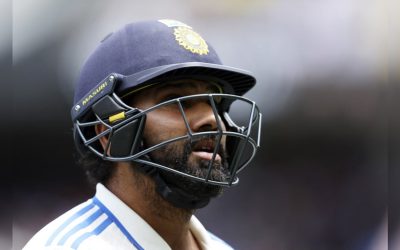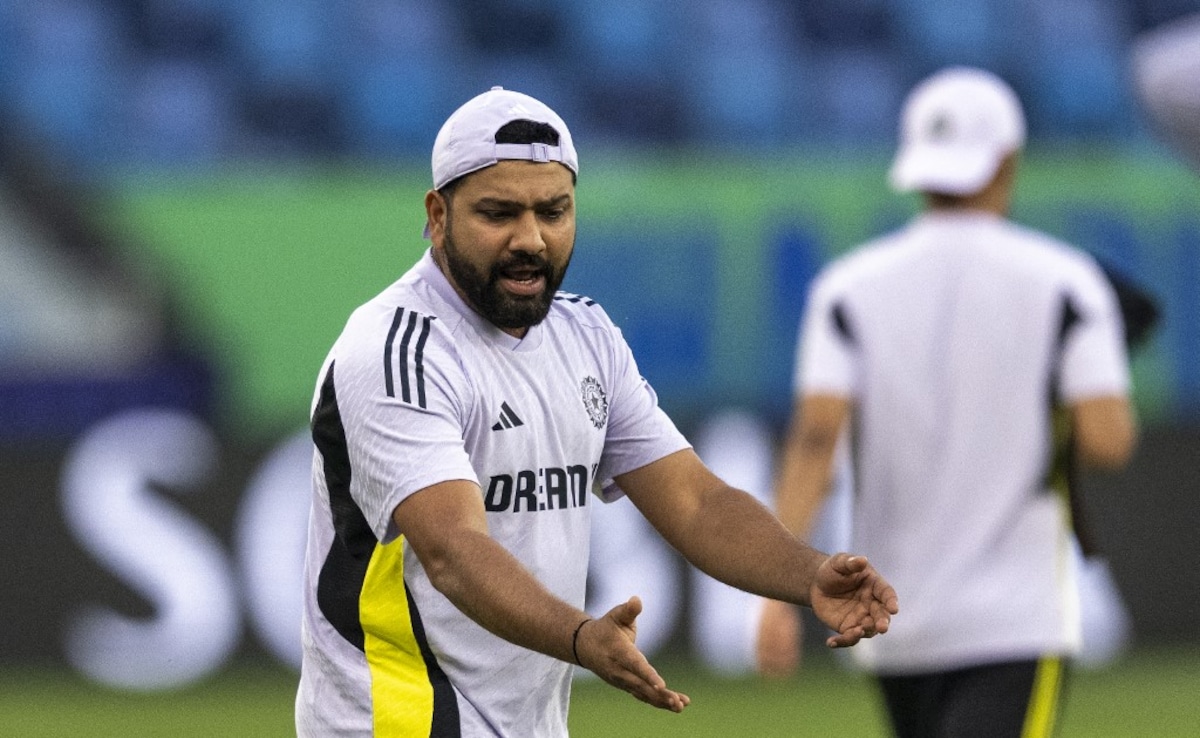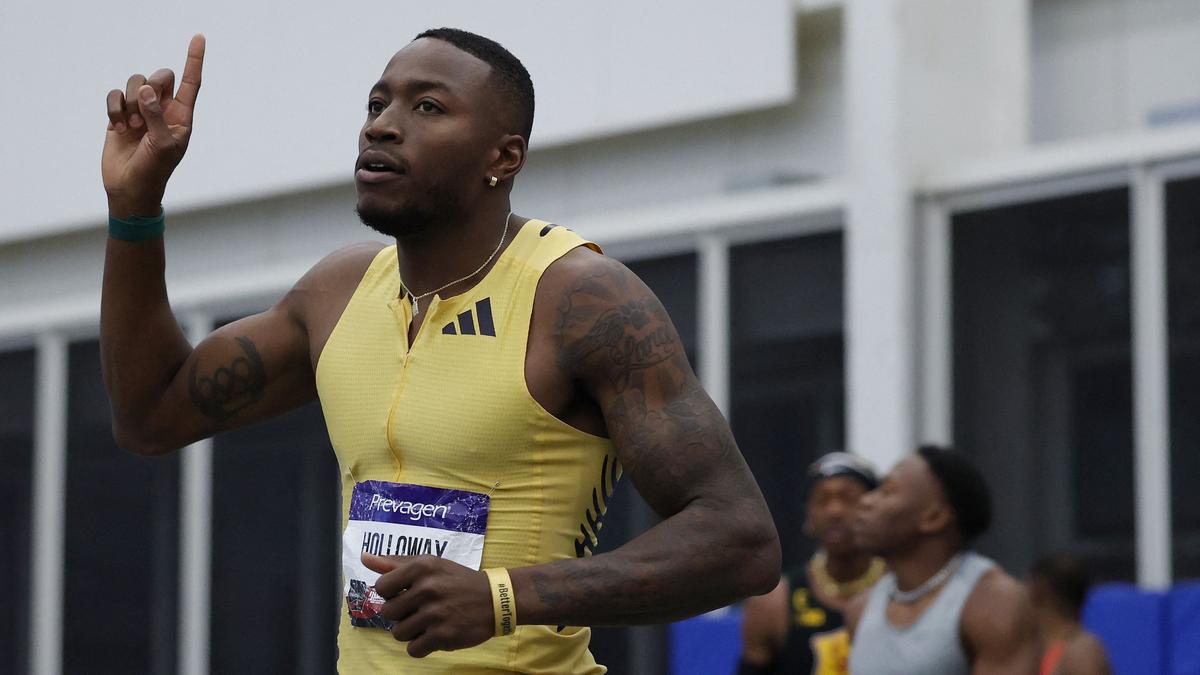With steep learning curve for Indian bow, archers look to graduate to recurve

By any measure, Manish Singh of Mathura, Uttar Pradesh, has had a successful National Games, securing a gold and a silver medal in the Indian bow archery competition. Thanks to his state’s generous sports reward policy, he can expect to earn approximately Rs 10 lakh — the Uttar Pradesh government has announced Rs 6 lakh for gold medal winners and Rs 4 lakh for silver.
Manish plans to use the money to pay off loans his father, a farmer, took to support his sporting career. Then, without hesitation, he intends to abandon the equipment that brought him his most significant medals and invest upwards of Rs 3 lakh in a sleek, modern recurve bow, starting his recurve career from scratch.
Although the Indian round is a medal event at the National Games, and some advocates vouch for its roots in indigenous tradition, for most archers, it is at best a stepping stone to recurve or compound archery — and at worst, a dead end.
Traditional look but recent origin
Unlike the sleek, high-tech metal and carbon-fibre recurve and compound bows used in global competitions such as the World Cups, continental tournaments, and the Olympics, the Indian bow appears rudimentary. It consists of two laminated bamboo limbs slotted into a hardwood grip and secured with metal screws.
Indian bow team gold medallist Ravi Malik of Haryana, who won men’s team gold, appreciates its all-wood construction. “It’s like the bow that Ram and Lakshman, and the warriors of the Mahabharata, used. This is part of our culture,” says the 25-year-old, who has a sticker reading Jai Shri Shyam on his bow’s grip.
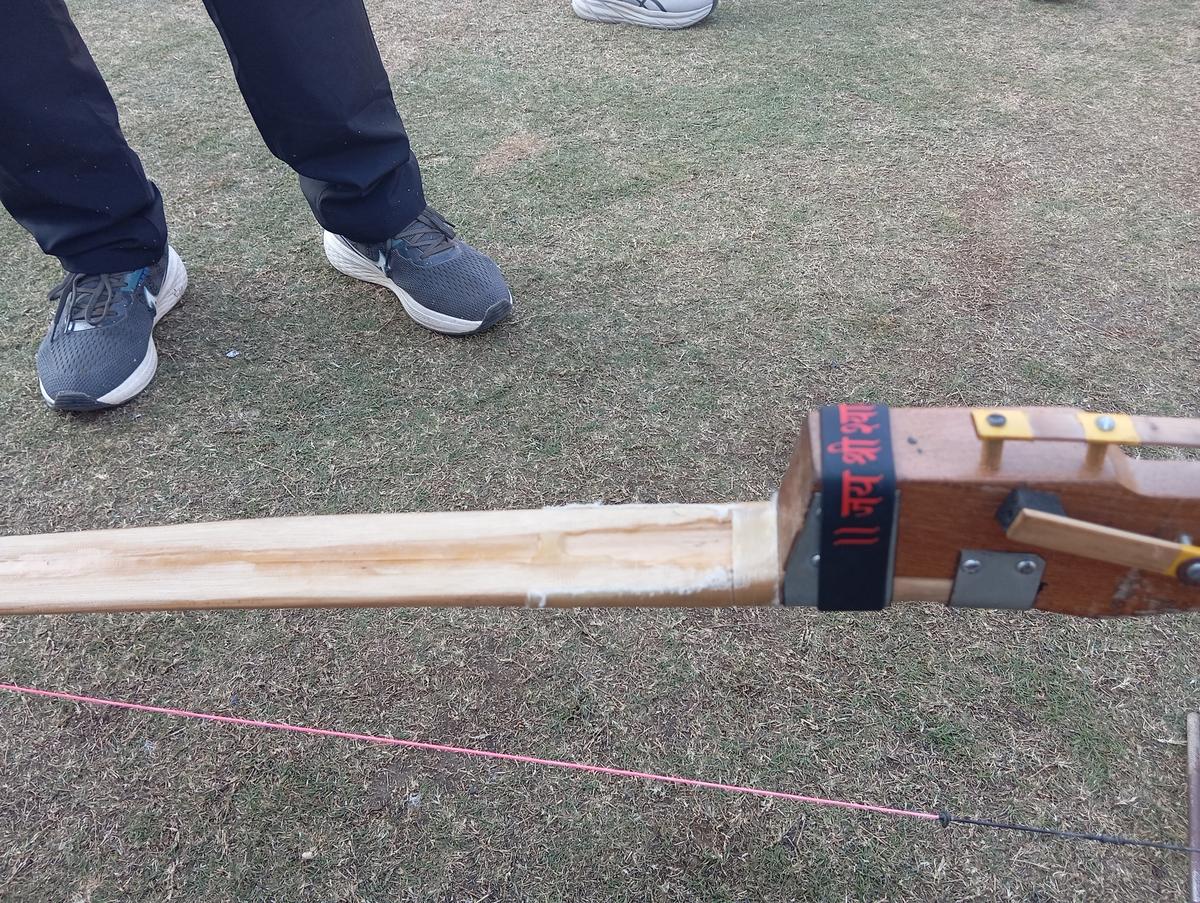
National Games gold medallist Ravi Malik’s bow has a sticker reading Jai Shri Shyam.
| Photo Credit:
JONATHAN SELVARAJ
National Games gold medallist Ravi Malik’s bow has a sticker reading Jai Shri Shyam.
| Photo Credit:
JONATHAN SELVARAJ
However, despite its traditional aesthetic, the Indian bow is a relatively recent invention. Also called the Manipur bow, its origins date back to 1985, when Manipuri coach Chaoba Sharma — brother of Basanti Devi, Manipur’s first international archer — designed it.
“Chaoba started an archery club in Manipur in the 1980s. There was a lot of interest in the sport, but recurve bows were too expensive,” explains Premkumar Sharma, manager of the Manipur team. “After much trial and error, he attempted to replicate a recurve bow using bamboo. He made the first Indian bow in 1985 and even received a governor’s award for his innovation. His aim was to create an affordable alternative. Gradually, it gained popularity, first in the Northeast, then Bengal, and eventually at the national level in the early 1990s.”
Labour-intensive process
The process of making the Indian bow, which stands six feet tall, has changed little since the 1980s. “You need a very specific type of bamboo,” says Premkumar. “The stem must be at least six years old and can only be harvested in November or December. If harvested at other times, weevils could infest it, causing the bow to snap. After harvesting, the bamboo must be soaked in water for a month and then smoked for another six months. Only then is it ready to be shaped into limbs.”
The wooden grip, into which the bamboo limbs are slotted, is made from a dense hardwood sourced from Myanmar. The arrows are crafted from younger bamboo, typically less than a year old. “The bamboo shoots come from the Koubru Hills in Manipur,” Premkumar explains. “They’re usually not completely straight, so after harvesting, they are heated over a flame and manually straightened.” The only non-natural components are the plastic fletches at one end of the arrows and the metal arrowheads at the other.
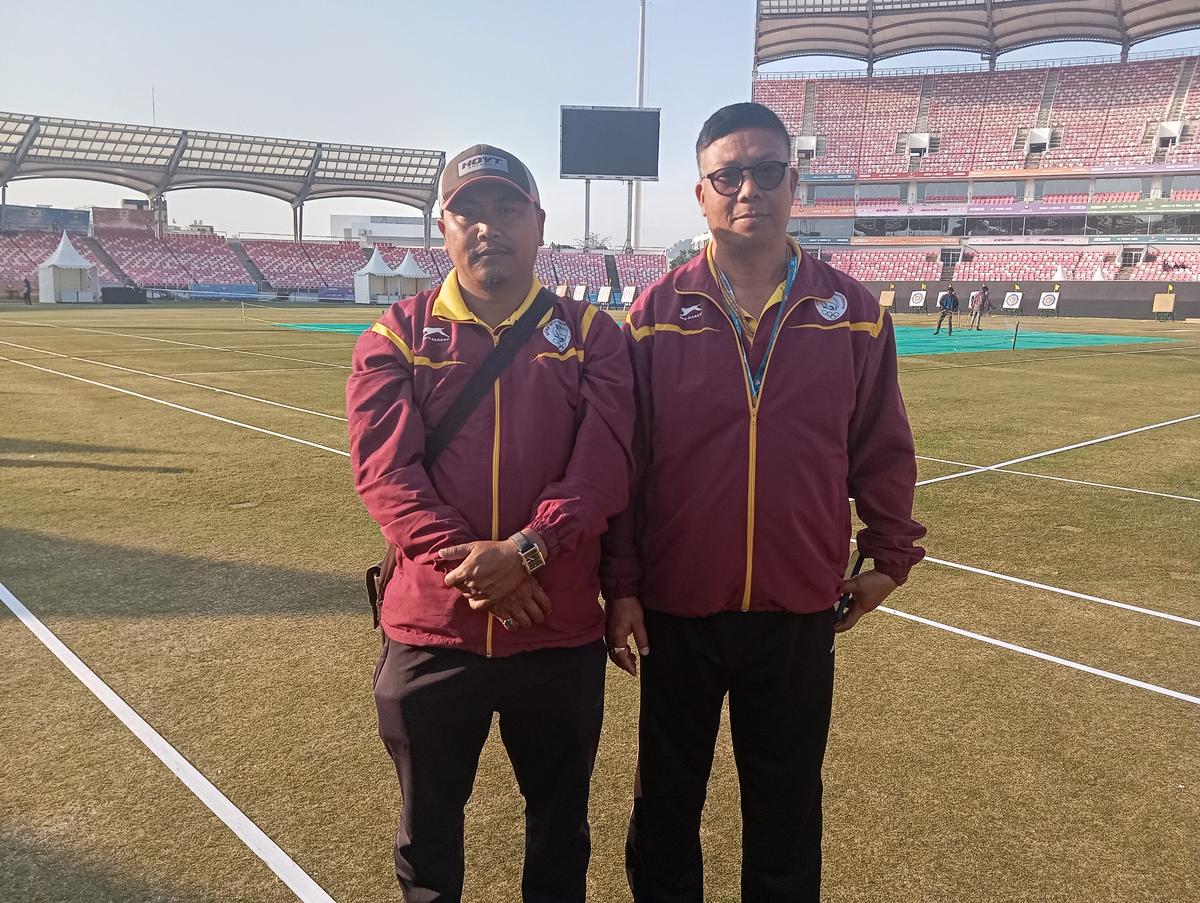
Manipur archery team coach Bijendranath Singh with manager Premkumar Sharma.
| Photo Credit:
JONATHAN SELVARAJ
Manipur archery team coach Bijendranath Singh with manager Premkumar Sharma.
| Photo Credit:
JONATHAN SELVARAJ
Cost vs performance
The primary advantage of the Indian bow is its affordability. Outfitting an archer with an Indian bow and a set of arrows costs around Rs 10,000, whereas a good-quality recurve bow costs nearly Rs 4 lakh.
“Most archers come from modest backgrounds. If you’re just starting, investing in an expensive bow doesn’t make sense. In Haryana, for every archer using a recurve bow, there must be ten using the Indian bow,” says Haryana coach Manjeet Malik, who trains archers across all three disciplines — recurve, compound, and Indian bow.
However, the low cost comes with limitations. Since each bow is handmade, quality can be inconsistent. The limbs can crack in cold weather, and bowstrings occasionally snap mid-competition. At the National Games, a Manipur archer, Robinson Elangbom, saw his bowstring break during the team event, causing his team — pre-tournament favourites — to crash out in the second round.
The bow’s power is also significantly lower than a modern recurve. Indian bow competitions are held at a 50-metre distance, compared to the 70-metre standard in recurve events. “A recurve bow typically has a draw weight (the force required to pull the string) between 35 and 45 pounds. I have no idea what the draw weight of an Indian bow is, but it must be at least half of that,” says four-time Olympian Deepika Kumari.
The lightweight bamboo arrows, averaging just nine grams compared to the 30-gram Olympic-standard arrows, are highly susceptible to wind drift.
High margin for error
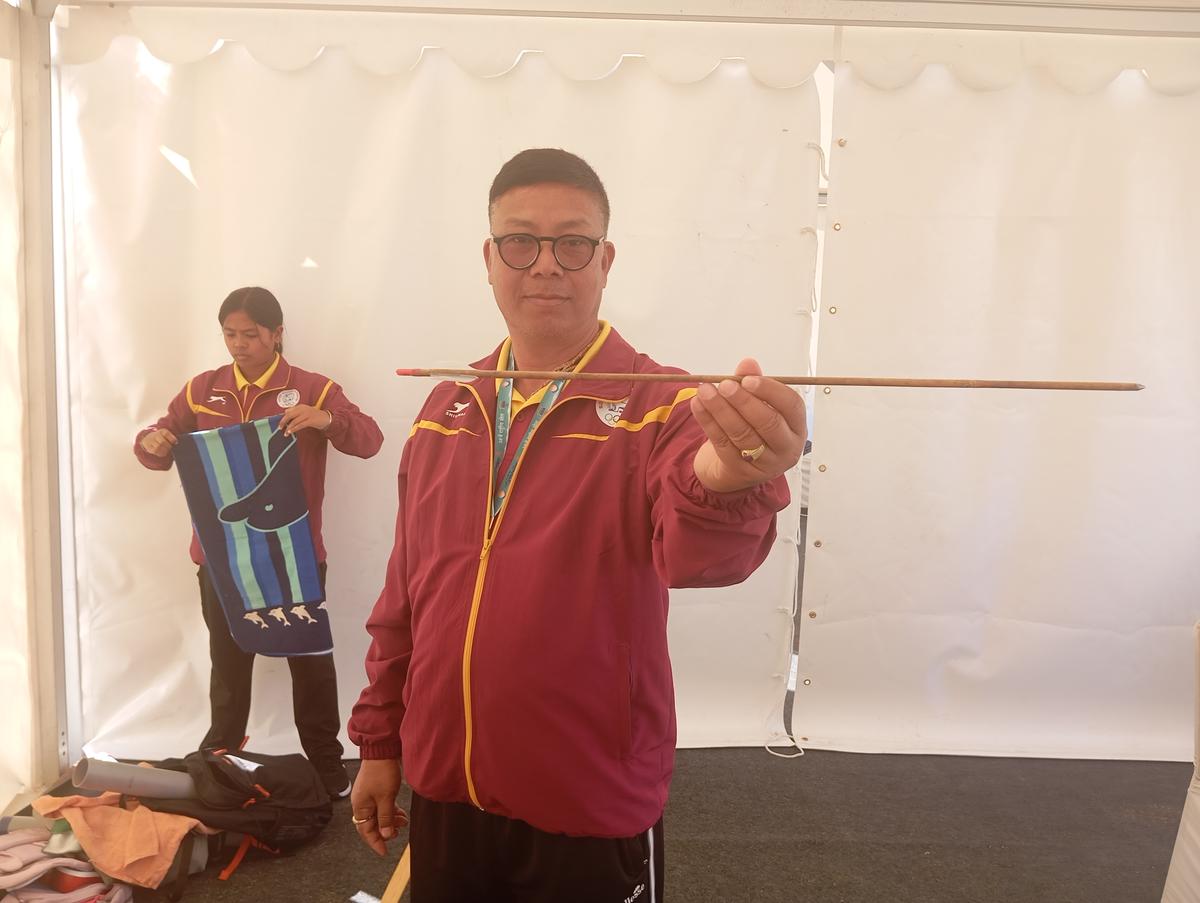
Manipur team manager Premkumar Sharma holding a bamboo arrow.
| Photo Credit:
JONATHAN SELVARAJ
Manipur team manager Premkumar Sharma holding a bamboo arrow.
| Photo Credit:
JONATHAN SELVARAJ
All these factors make the Indian bow, despite being a beginner’s weapon, incredibly challenging to master. “It’s much harder to shoot than a recurve bow,” says Deepika. “A recurve bow is more powerful, and wind conditions don’t affect it as much. The Indian bow’s arrows are so light that their trajectory is much more curved, and even the slightest breeze impacts them. Indian bow ke saath arrow daudta hai hawa ke saath! (The Indian bow’s arrow runs with the wind!).”
The handmade nature of the arrows also adds unpredictability. “One arrow might be lighter than the next, or slightly less straight. Once, while shooting, one arrow went to the top corner, another hit the centre, and a third landed at the bottom. On one occasion, my arrow drifted so much in the wind that it knocked someone’s laundry off a clothesline! If anything you have to be very smart when you are shooting the Indian bow. You have to be very conscious of the arrow you are using and the wind that’s blowing,” she recalls.
Unsurprisingly, most young archers can’t wait to move on. “It’s incredibly difficult to master, and you can’t compete beyond the national championships with an Indian bow. If you want to participate in World Cups, the Asian Games, or the Olympics, you have to switch to recurve or compound,” she explains.
Quick transition for most
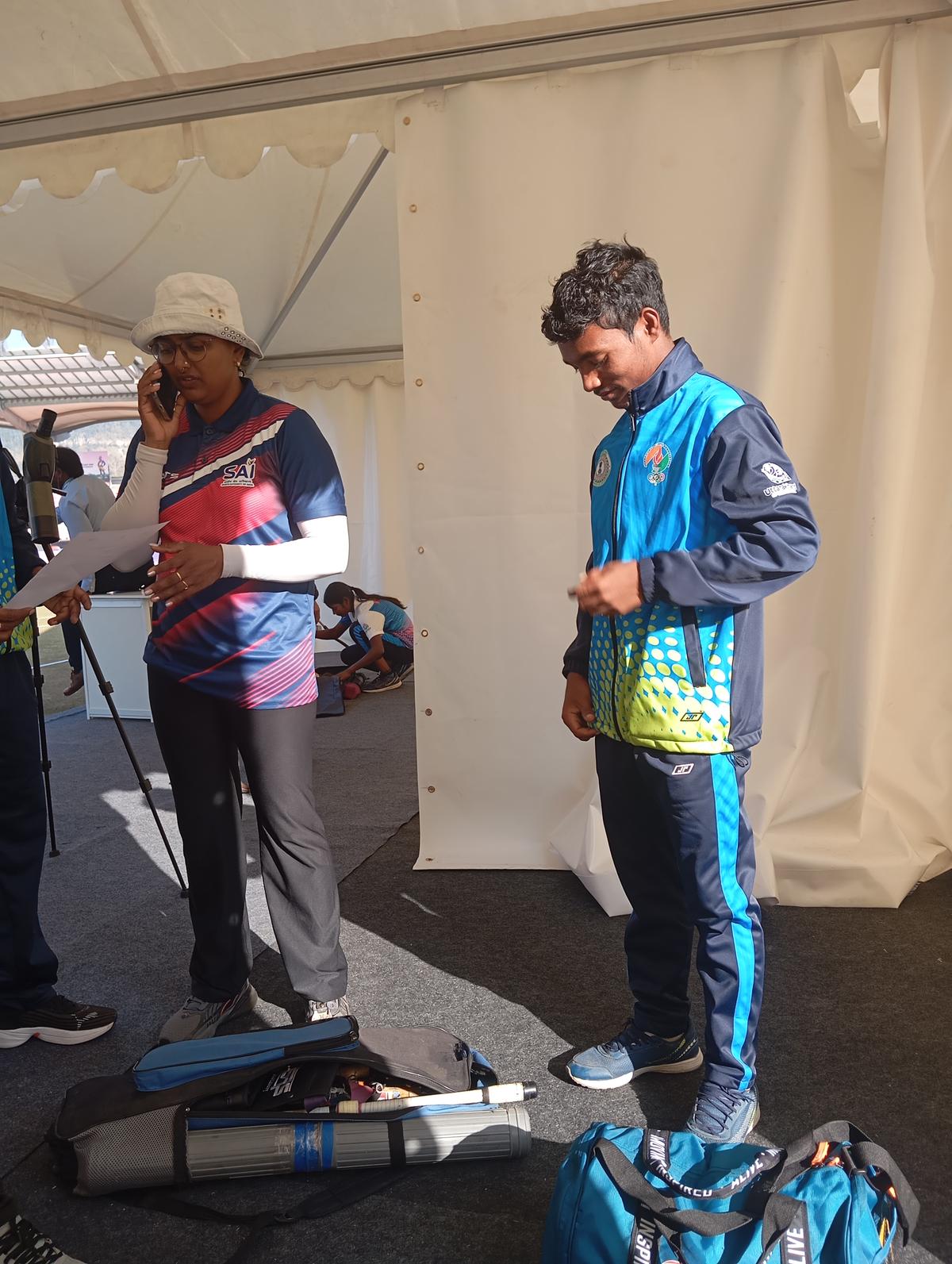
At the National Games, four-time Olympian Deepika Kumari signed an application form for 14-year-old Madho Birua, Jharkhand’s youngest archery medallist at this National Games, to receive his first recurve bow.
| Photo Credit:
JONATHAN SELVARAJ
At the National Games, four-time Olympian Deepika Kumari signed an application form for 14-year-old Madho Birua, Jharkhand’s youngest archery medallist at this National Games, to receive his first recurve bow.
| Photo Credit:
JONATHAN SELVARAJ
Indeed, nearly every medallist in the Indian bow event aims to upgrade to a recurve bow as soon as possible. At the National Games, Deepika signed an application form for Jharkhand’s 14-year-old Madho Birua — the youngest archery medallist at the event— to receive his first recurve bow. “I won’t shoot the Indian bow anymore. I want to compete at the Olympics, and for that, I need to shoot recurve,” he says.
Most talented archers transition out of the Indian bow category in their teens. Manipur coach Bijendranath Singh considers himself unlucky for being forced to stick with it. Despite being a multiple-time national champion and a silver medallist at the 2015 National Games, his job with Assam Rifles prevented him from switching. “I won my first national championship in 2008, then got a job with Assam Rifles. I kept winning, so they didn’t want me to switch to recurve. I even won a gold at the national games in 2015. I finally left Assam Rifles in 2019, but by then, it was too late for me to start over,” he laments.
Few choose to stay with the Indian bow out of preference. One such exception is Ravi, who is among the older archers in this category. “I started with the Indian bow before switching to recurve at 17. I shot recurve for five years but wanted to compete at the National Games. I knew recurve competition would be much tougher, so I returned to the Indian bow. Now that I’ve won gold, I’ll probably switch back,” he says.
For most, however, the Indian bow is a mere stepping stone — one they are eager to leave behind.

